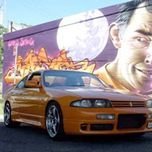Rb25 Rebuild
Announcements
-
Similar Content
-
Latest Posts
-
I'd want an even MORE side on view. More or less you want to make sure the outlet is actually square with the outermost part of the bumper. Or you end up getting soot all over your bumper from your hektik exhaust. In any case, it looks pretty close. I think the way to fix this is probably more of an overhaul at an exhaust specialty shop if you want tips that are rounded off or sit nicely with the bumper but have proper clearance and don't move - Probably more of a redesign than a quick fix. I've pencilled in my own exhaust with its own various problems, pinholes, PITA fitment, and other issues and can see myself going to a shop and saying "JUST DO THIS BUT BETTER?" Which is gonna work better than any more small fixes. I'm gonna chime in here officially with "from an outsider perspective this exhaust looks fine so this is self OCD probably" (which I also suffer from)
-
By joshuaho96 · Posted
Reminds me I really need to install that HKS oil cooler I bought years ago. -
It be 40°C outside lately. 10W60 is a good idea here. Well, certainly 10W50.
-
By joshuaho96 · Posted
I just did an oil change on my daily which used oil that is probably 2-3 years old. Normally I try to follow exact viscosities, but my LS400 is fairly tolerant. Dumped something like half a quart of 0W30 Mobil1 ESP X2 in there, followed by 2 quarts Pennzoil 5W30, followed by ~1.2 quarts of liquimoly 5W30 LL04 spec oil. Then the rest was QS euro 5W40 which is actually so thin it's basically a 30 weight oil. All this is to say it doesn't matter that much. We aren't talking about brake fluid. For an RB I would recommend a high ZDDP oil because it doesn't use rollers in the interface between the cam and valve, but a 5W30 or 5W40 is fine to use for street use. The 10W60 guidance really only applies if you're getting it hot and pushing the engine hard.
-





Recommended Posts
Create an account or sign in to comment
You need to be a member in order to leave a comment
Create an account
Sign up for a new account in our community. It's easy!
Register a new accountSign in
Already have an account? Sign in here.
Sign In Now